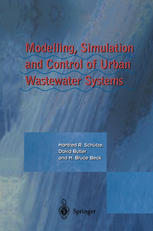

Most ebook files are in PDF format, so you can easily read them using various software such as Foxit Reader or directly on the Google Chrome browser.
Some ebook files are released by publishers in other formats such as .awz, .mobi, .epub, .fb2, etc. You may need to install specific software to read these formats on mobile/PC, such as Calibre.
Please read the tutorial at this link: https://ebookbell.com/faq
We offer FREE conversion to the popular formats you request; however, this may take some time. Therefore, right after payment, please email us, and we will try to provide the service as quickly as possible.
For some exceptional file formats or broken links (if any), please refrain from opening any disputes. Instead, email us first, and we will try to assist within a maximum of 6 hours.
EbookBell Team

5.0
98 reviewsby Professor Poul Harremoes Environmental engineering has been a discipline dominated by empirical approaches to engineering. Historically speaking, the development of urban drainage structures was very successful on the basis of pure empiricism. Just think of the impressive structures built by the Romans long before the discipline of hydraulics came into being. The fact is that the Romans did not know much about the theories of hydraulics, which were discovered as late as the mid-1800s. However, with the Renaissance came a new era. Astronomy (Galileos) and basic physics (Newton) started the scientific revolution and in the mid-1800s Navier and Stokes developed the application of Newtons laws to hydrodynamics, and later, St. Venant the first basic physics description of the motion of water in open channels. The combination of basic physical understanding of the phenomena involved in the flow of water in pipes and the experience gained by "trial and error", the engineering approach to urban drainage improved the design and performance of the engineering drainage infrastructure. However, due to the mathematical complications of the basic equations, solutions were available only to quite simple cases of practical significance until the introduction of new principles of calculation made possible by computers and their ability to crunch numbers. Now even intricate hydraulic phenomena can be simulated with a reasonable degree of confidence that the simulations are in agreement with performance in practice, if the models are adequately calibrated with sample performance data.